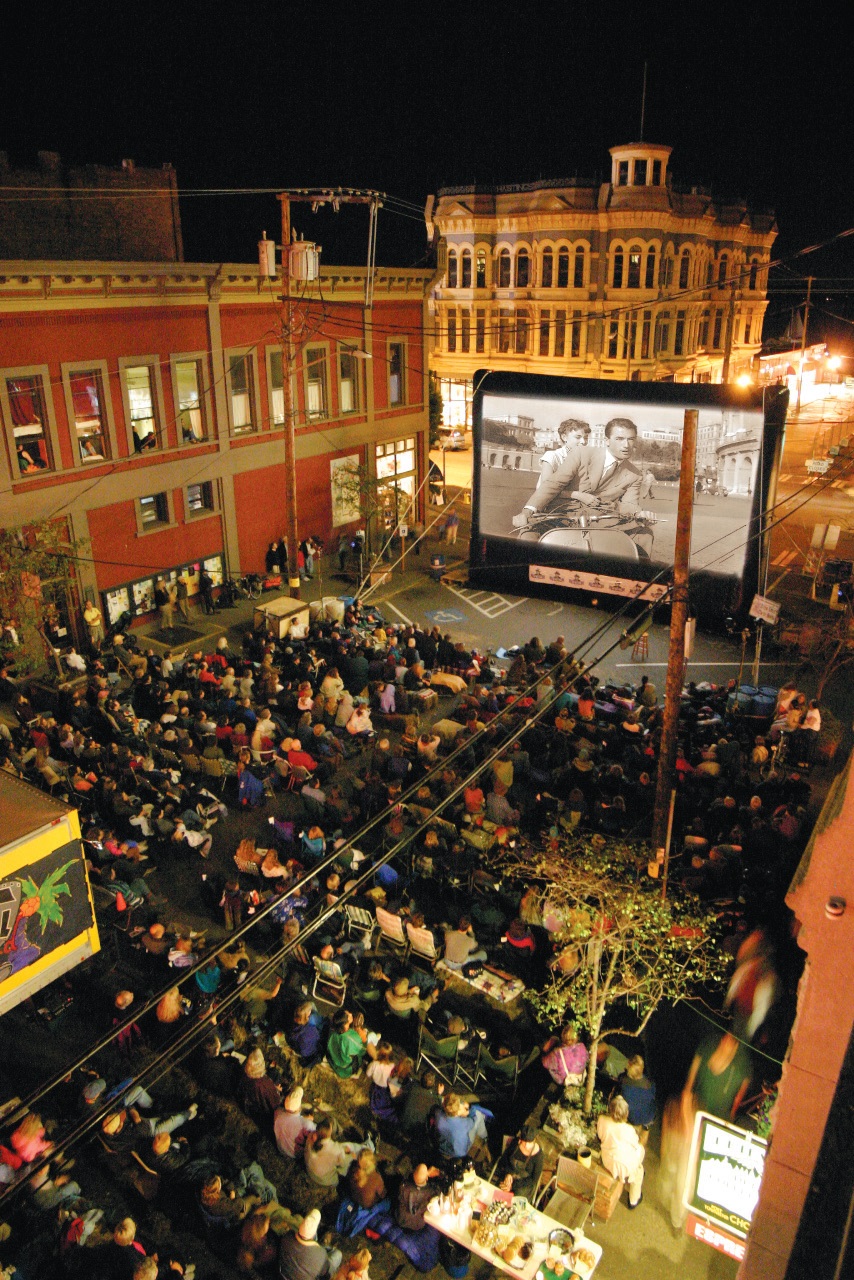
By Jonathan Mitchell

Meet Keiko. Sixteen feet tall and 30 feet wide it towers over most of the buildings in downtown Port Townsend. From its perch at the base of Taylor Street it threatens to blot out the view of Admiralty Inlet entirely.
This monolith is not a beached whale but rather a giant inflatable screen. Nicknamed Keiko for its size and black and white trim it served as the focal point for the 15th Annual Port Townsend Film Festival.
The festival occurred Friday Sept. 19 to Sunday Sept. 21. Sixty filmmakers arrived in the waterfront district, where the festival took place across six venues, by vintage cars as part of the opening ceremonies.
“By holding the festival in the National Historic District, we bring tangible awareness to Port Townsend’s unusually preserved 1880s era waterfront and the fact that the festival is walkable, very rare among film festivals that are either held in multiplexes or all over a large metropolitan area,” said Janice Halliday, development director for the festival.
The festival was a huge success this year. “Because our pass sales are complicated and don’t involve tickets we calculate the success of our festival differently,” Halliday said.
“Of nearly 10,000 seats available, this year we filled 84-86% a number we prefer to reach because it means that people can still get into a film if they’re closed out of another.”
As the sun sets on the first day of the festival, Taylor Street begins to crowd with people. Shut off to through traffic for the duration of the festival, Taylor Street served as an outdoor theater that screened free movies all three nights.
As festival attendees scrambled for seats on bails of hay and assorted camping chairs arranged in the shadow of Keiko special guests John Sayles and Maggie Renzi took to the stage to introduce their childrens opus, “The Secret Of Roan Inish”.
Sayles is best known for his work as a writer and a director. His works include the Oscar-nominated “Lone Star” (for best original script) and “Honeydripper,” both of which were also screened during the festival. Renzi, his longtime girlfriend, is also the producer for the majority of Sayles’ films.
After a brief background on “Roan Inish” Sayles begins to relate the joys of working with seals but then adds with a wry smile, “Don’t ever work with a seagull.”
Saturday morning marked the first of two filmmaker panels at the festival bar, Area 51. Outside doors emblazoned with faux-government warning signs, alien mannequins adorned in thrift store affectations are propped against makeshift fences. Inside the small square room seven writers, directors and producers discussed the topic, “The Challenges Of Independent Production”.

Writer/director of “Amira & Sam”, Sean Mullin, drew on his history in the army and later as a New York-based, stand-up for the romantic comedy which stars “Freaks and Geeks” alum Martin Starr as Sam, an ex-Green Beret turned comic and his relationship with Amira, an illegal Iraqi immigrant.When the subject of unforeseen complications was raised by moderator, Steph Argy, Mullins chimed in with a story that happened on the first day of filming “Amira & Sam”.
The lead actress had mistakenly put her contact lenses in the wrong solution and had then put them in her eyes. “She had a corneal abrasion,” said Mullin, “we had to take her to the hospital.” As a result, the whole first day of shooting was done with a stand-in, using over the shoulder shots to hide the fact.
On every level there was a lot of work that went into putting this festival on. Eight months before the festival sixteen people set to work getting a list of over 400 films down to the roughly 80 that played during the festival. The costs of paying these workers along with air travel and lodging for guests, screening rights, speaker fees and more made the 100 business sponsors invaluable. It served as a chance to learn things firsthand from tried and true filmmakers.
“We think of our festival as a three-day intensive symposium of evaluating (and enjoying) storytelling that uses film as a medium,” Halliday said in an email.
The festival will return September 2015 and will feature the addition of a new theater.
